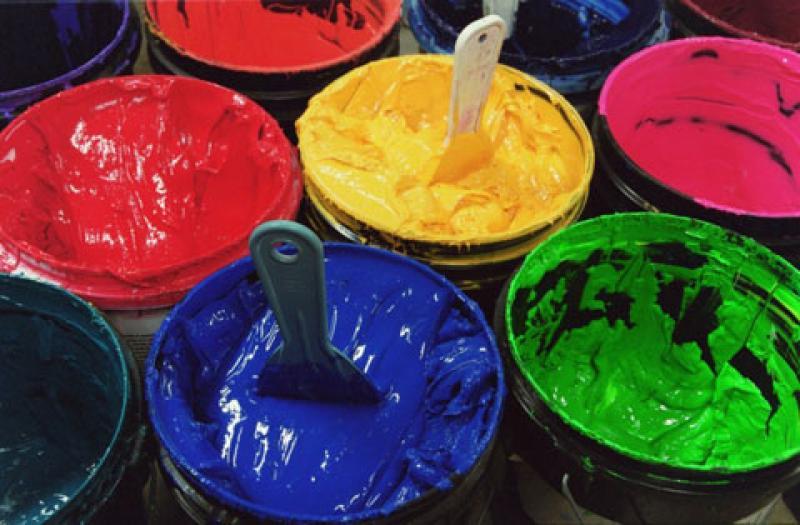They are versatile liquid polymer dispersions that are used in a wide range of applications. A plastisol is created by dispersing plastic particles, usually polyvinyl chloride (PVC), in a liquid plasticizer such as a phthalate ester. When heat is applied to a plastisol, the plasticizer liquefies the plastic particles, allowing them to fuse together. This curing process produces a flexible, durable solid material.
Composition and Properties
They are made up of three main components - a polymer resin, a Plastisols, and a carrier liquid such as mineral spirits or naphtha. The polymer used is typically PVC due to its flexibility and low cost. It is present in the form of dry powder or flake. Plasticizers such as phthalate esters are added to make the material softer and more flexible. They also improve adhesion and lower the melting point of PVC. The carrier liquid keeps the resin particles dispersed until curing. When heat is applied, the carrier evaporates and the plasticizer softens the PVC, fusing the particles into a uniform film or coating. The final cured plastisol is non-toxic, durable, waterproof, stain resistant and can be exposed to UV light for some time. It retains application thickness well and has good adhesion to various substrates.
Significant Applications
Coatings and Gravure Printing - Liquid Plastisols are excellent for coatings and rotogravure printing applications due to their stability, low viscosity and ability to flow out smoothly. They are used extensively to apply prime coats, finish coats or adhesive coats onto fabrics, paper, film and metal sheet substrates. Flooring material, artificial leather, wall coverings, bags and case goods exploit this application.
Dipped and Molded Goods - When using a dipping process, objects can be submerged in a bath and then cured. This allows creating seamless protective coatings for many products like wire insulation, cable jacketing, hoses, gaskets and footwear. Its molding involves pouring the liquid into a mold cavity and heating to shape complex hollow and solid items like toys, helmets, bath accessories, electrical components housings etc.
Calendering and Extrusion - Plastisols can be calendered into sheets or profiles for further processing or direct use. Calendered vinyl sheet stock is widely used for signs, graphics, patterns, wall and floor coverings. Extrusion gives endless strips, rods or tubes that after curing, act as insulated wire and cable jacketing. Calendered have good smoothness and mechanical properties.
Flocked - By electrostatically spraying flocked fibers onto a wet film, a fuzzy flocked surface is produced. This finds application for footwear, automotive trim, apparels for theirunique sensory and aesthetics. Flocking add dimension, softness and shear resistance to substrates.
Advantages over other Polymers
Ease of Processing - Compared to other thermosets, they are pourabile liquids that can easily coat, print or mold intricately shaped articles without high pressures or sophisticated equipment. Catalysts or other chemicals are also not needed.
Curing at Lower Temperatures - The presence of plasticizers allows plastisols to gel and cure at temperatures as low as 300°F/150°C, compared to 400-500°F needed for other vinyl materials. This reduces energy costs.
Durability and Versatility - Cured plastisols demonstrate very good resistance to fire, chemicals, weathering and abrasion. They adhere well to dissimilar substrates and retain applied shapes accurately after processing.
Cost Effectiveness - With PVC being inexpensive and formulations requiring no expensive additives, they have competitive production costs versus other polymers. Simple equipment further aids affordability.
Emerging Applications and Future Outlook
3D Printing Filaments - Efforts are underway to develop specialized formulations that can be extruded through 3D printer nozzles and subsequently cured. This will allow creating complex structured objects with useful properties like those of hardened plastisols.
Biobased - Research focuses on partially substituting petroleum-derived components in them with plant-based oils and resins. For instance, limonene plasticizers provide opportunities for eco-friendlier.
Self-healing Materials - Scientists experiment with incorporating microcapsule repair agents into them. On damage, the capsules rupture and heal cracks autonomously via plasticizer mobility at low temperatures. This could extend product lifetimes.
Stricter regulations may affect plasticizer usage. However, they will likely remain popular broadly due to their simplicity, versatility and established infrastructure for various cost-effective molding, coating and calendering applications. formulators will continue optimizing compositions for specialty performance and environmental requirements.
For Deeper Insights, Find the Report in the Language that You want:
About Author:
Money Singh is a seasoned content writer with over four years of experience in the market research sector. Her expertise spans various industries, including food and beverages, biotechnology, chemical and materials, defense and aerospace, consumer goods, etc. (https://www.linkedin.com/in/money-singh-590844163)
